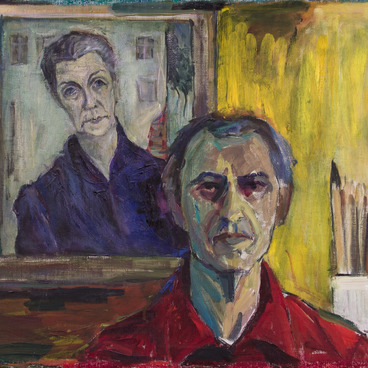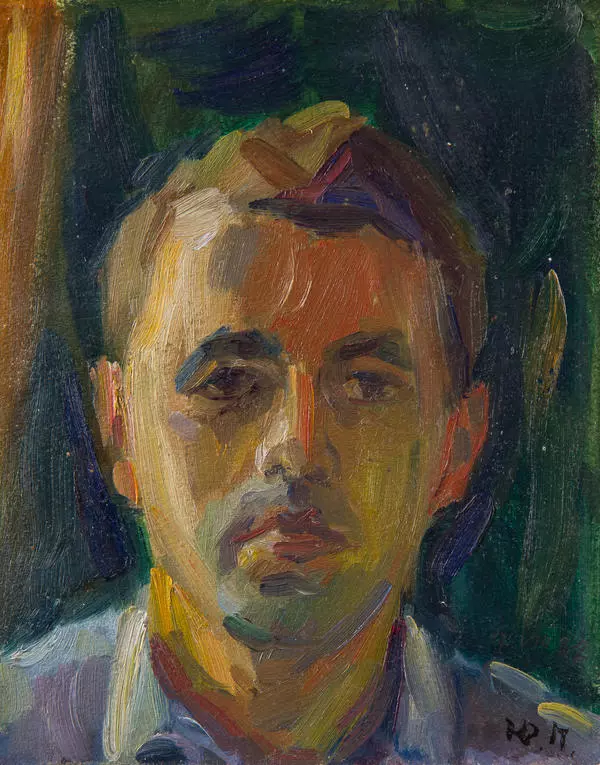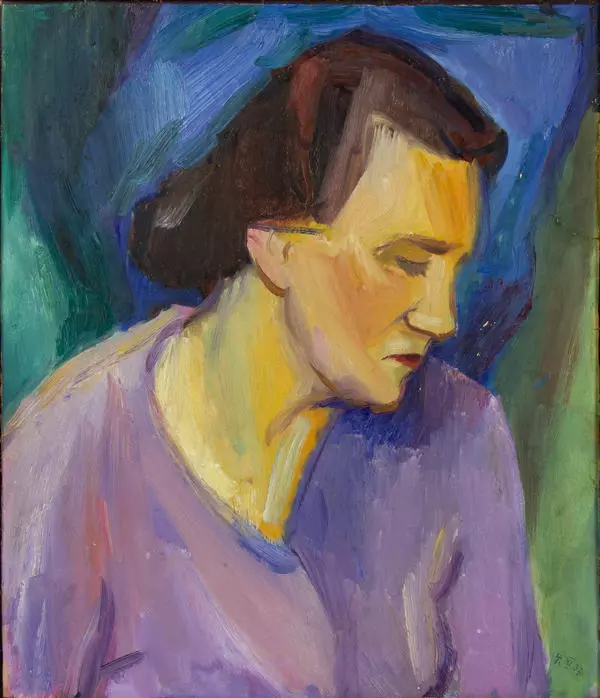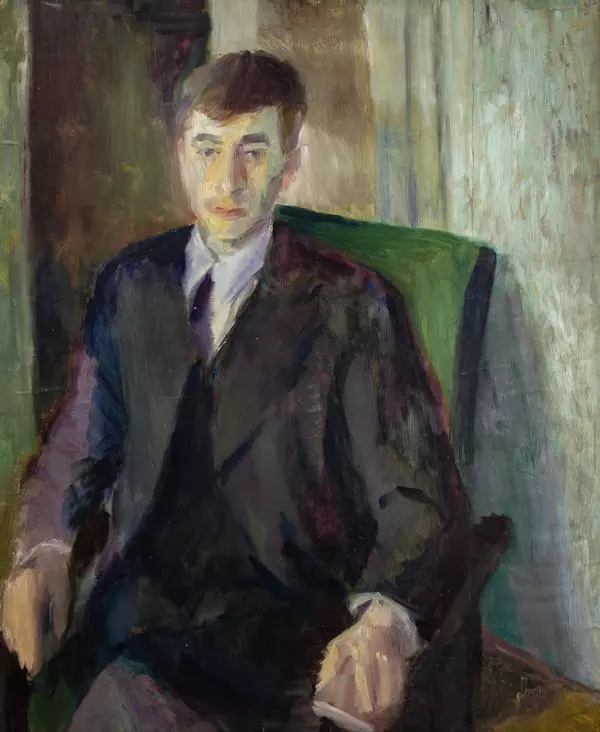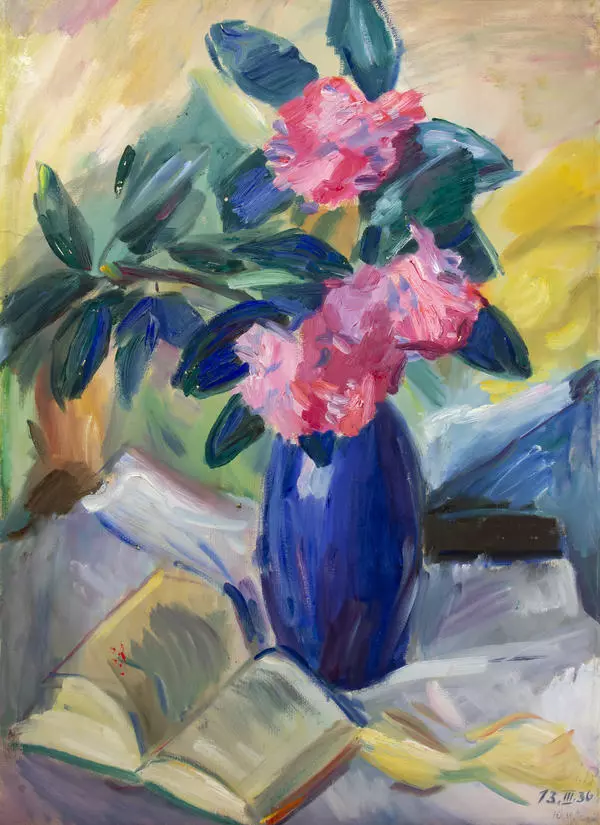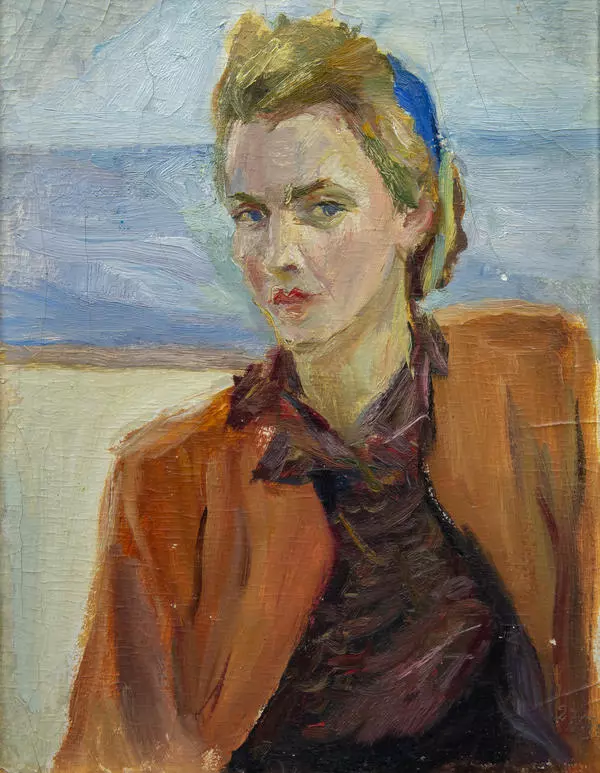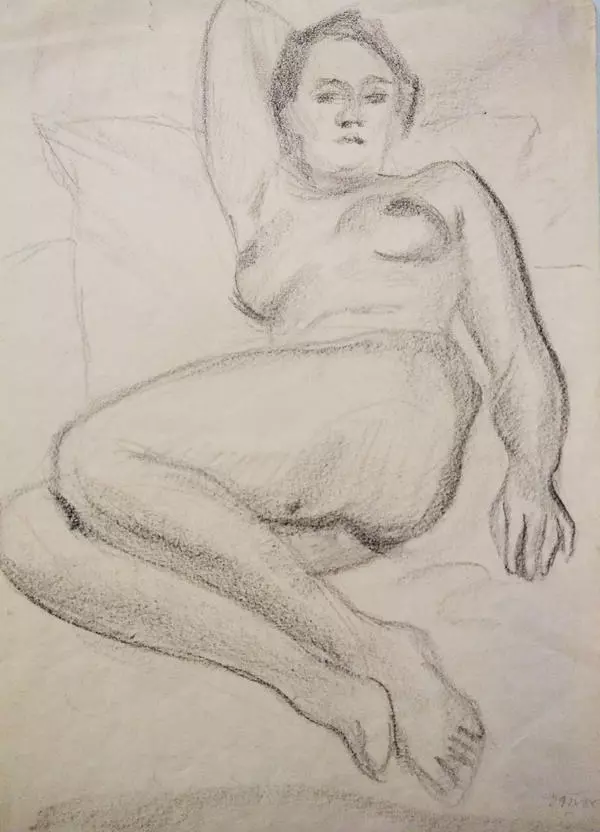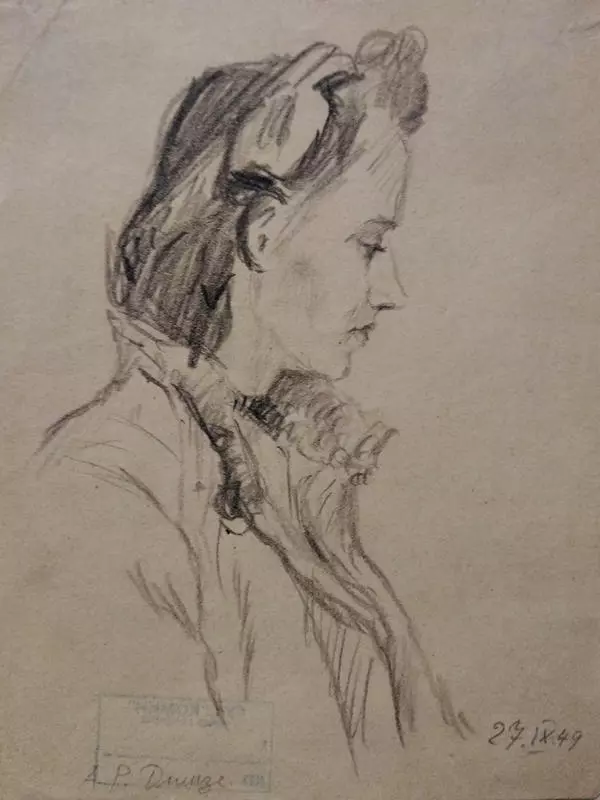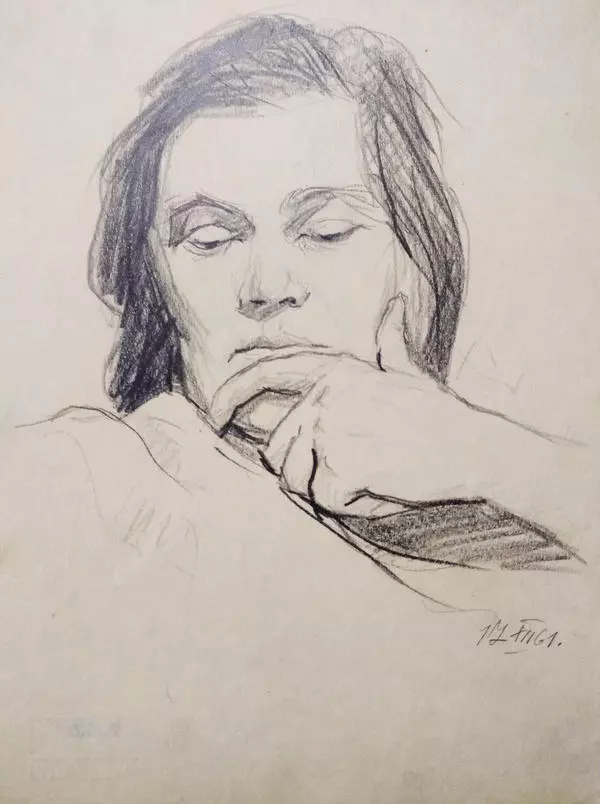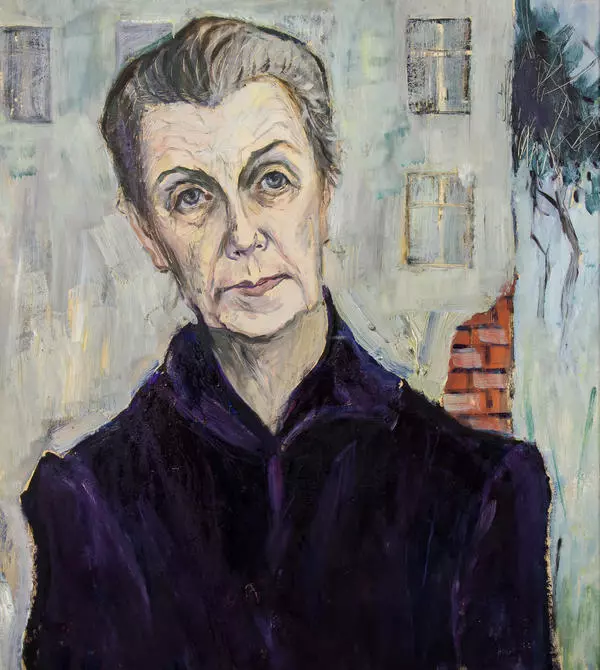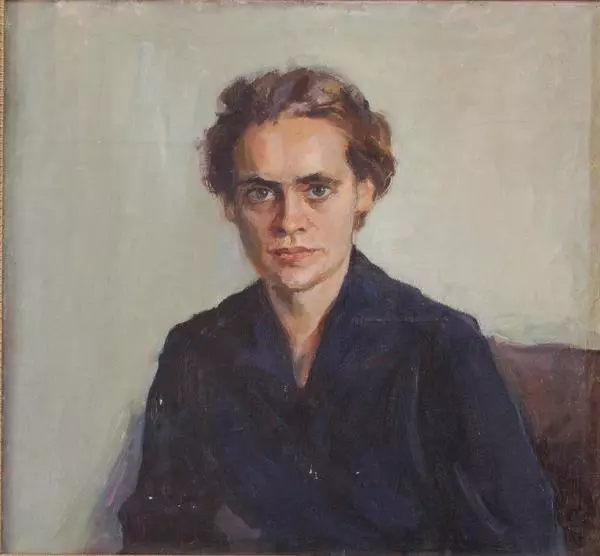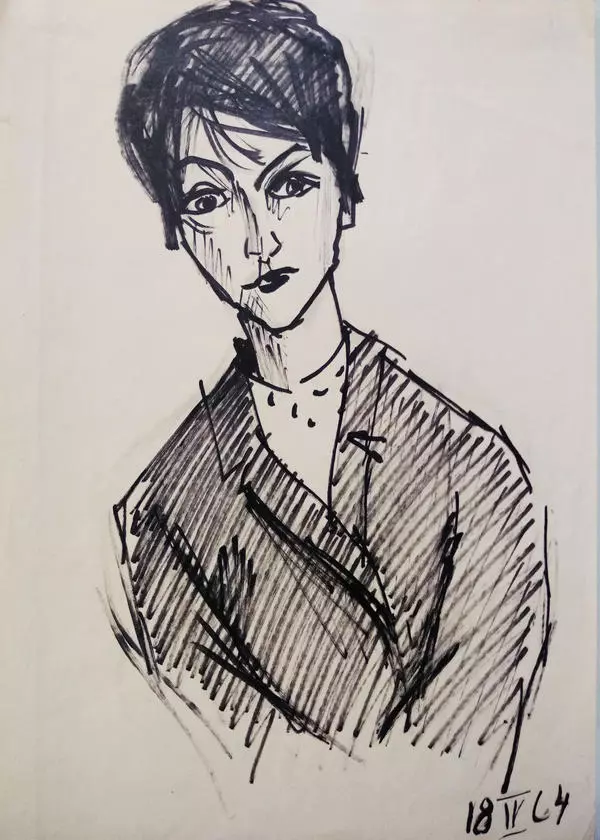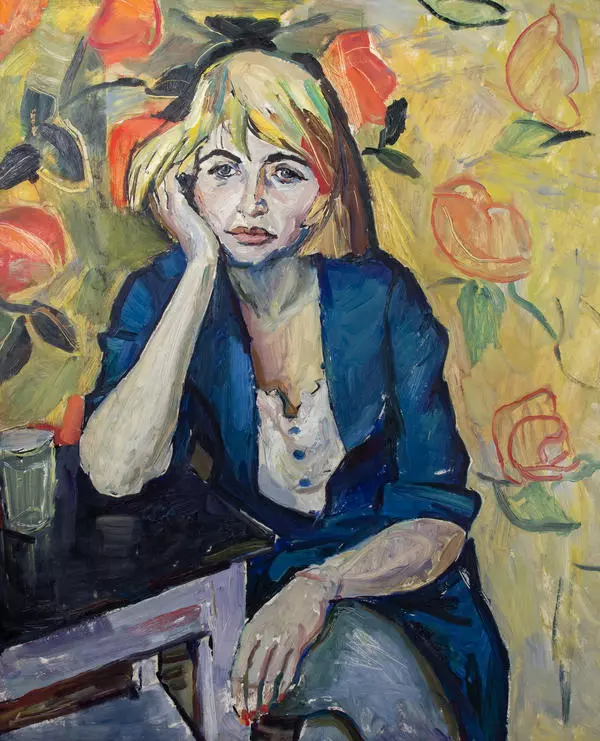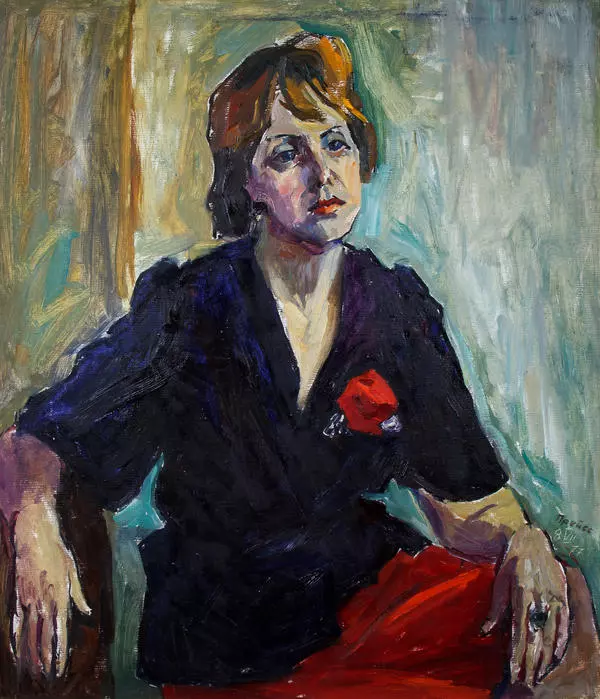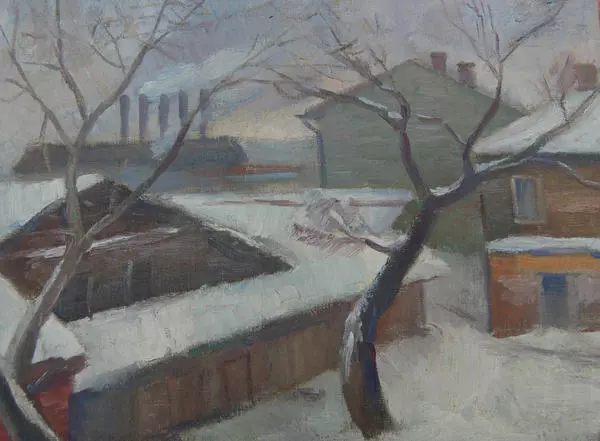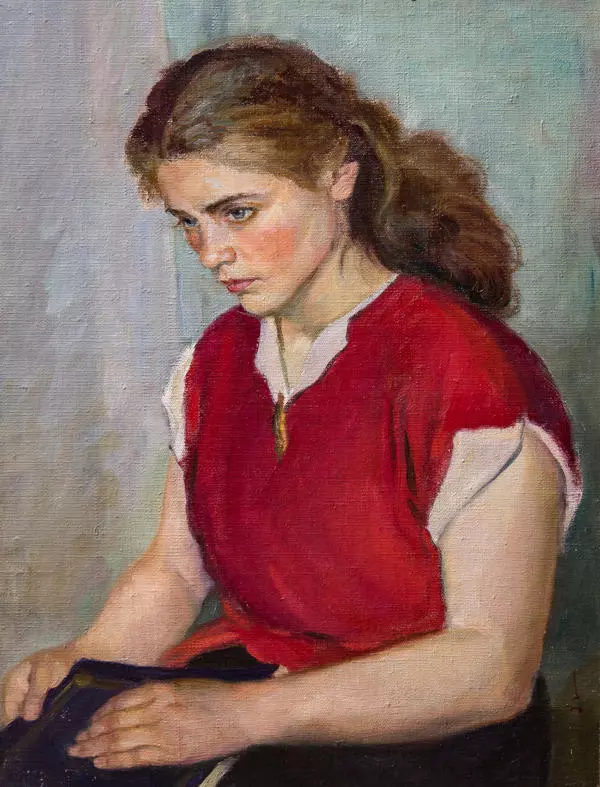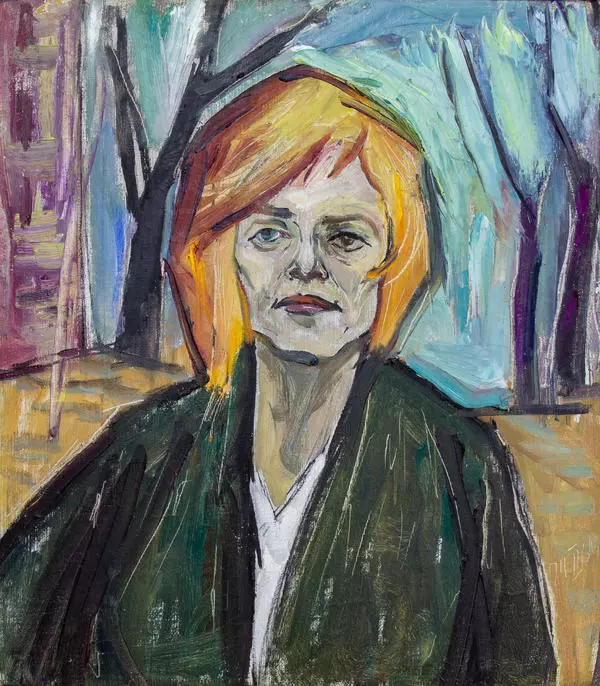Jurgis Preiss lived in Berlin, East Germany, between October 1963 and April 1965. His private notebooks reveal that, while there the artist met with his former comrades-in-arms in the anti-fascist movement, including Communist Max Reimann, the first secretary of the Communist Party of Germany. This is also evidenced by his portrait the artist painted from life.
Max Reimann was born on the territory of the former Eastern Prussia, in the city of Elbing (now the territory of Poland) in 1898. From a young age he worked at shipyards. Reimann got involved in active political activity in his early youth - he led the metalworkers’ union of his city. He became a member of the Union of Socialist Youth Workers in 1913, which was then called the Union of Spartacus. He began to study revolutionary literature, took part in the November Revolution of 1918, was arrested a year later for his participation in the revolutionary activities and served a one-year prison term.
Reimann joined the ranks of the Communist Party as soon as it was formed in Germany and continued his activities towards its aims when the Nazis came to power. Max Reimann continued to operate clandestinely for the party until his arrest in 1938. He headed a clandestine organisation in the Sachsenhausen concentration camp and later led a similar underground movement in Falkensee. As a result of the uprising, the concentration camp was handed over to the advancing units of the USSR army.
After World War II, Max Reimann continued as one of the leaders of the Communist Party of Germany. He opposed the division of Germany into two states. When, in 1956, the Communist Party was banned in Germany, Reimann continued to fight and promote his ideals, but by clandestine means. The Party was legalized again at the end of the 1960s.
The quick and accurate sketch by Jurgis Preiss conveys both the external similarities and the nature of his model.
Max Reimann was born on the territory of the former Eastern Prussia, in the city of Elbing (now the territory of Poland) in 1898. From a young age he worked at shipyards. Reimann got involved in active political activity in his early youth - he led the metalworkers’ union of his city. He became a member of the Union of Socialist Youth Workers in 1913, which was then called the Union of Spartacus. He began to study revolutionary literature, took part in the November Revolution of 1918, was arrested a year later for his participation in the revolutionary activities and served a one-year prison term.
Reimann joined the ranks of the Communist Party as soon as it was formed in Germany and continued his activities towards its aims when the Nazis came to power. Max Reimann continued to operate clandestinely for the party until his arrest in 1938. He headed a clandestine organisation in the Sachsenhausen concentration camp and later led a similar underground movement in Falkensee. As a result of the uprising, the concentration camp was handed over to the advancing units of the USSR army.
After World War II, Max Reimann continued as one of the leaders of the Communist Party of Germany. He opposed the division of Germany into two states. When, in 1956, the Communist Party was banned in Germany, Reimann continued to fight and promote his ideals, but by clandestine means. The Party was legalized again at the end of the 1960s.
The quick and accurate sketch by Jurgis Preiss conveys both the external similarities and the nature of his model.


